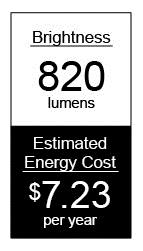 ElectricalConnection.org
ElectricalConnection.org
Connect with Us:
Facebook
LinkedIn
Twitter
YouTube
As of August 1, 2023, a ban on the sale of common incandescent light bulbs took effect. As fall approaches, we will be entering the season when we are more dependent on lighting. Daylight hours shrink. Night time hours expand. So homeowners begin to notice a certain “dimming” in their lives that may require new lights, lighting upgrades or a new lighting design. Some things to consider in an era when incandescent lights are dimming out of existence in favor of more cost efficient LEDS:
· Before going out to bring home boxes of bulbs, evaluate your lighting needs if you gradually want to phase in LEDs. What rooms or spaces are most used that require better, more cost efficient lighting? You’ll begin optimizing cost savings quicker if you first target areas where power is used the most. Also consider LED upgrades for those hard to reach lights that typically require a ladder to reach. The less time up on a ladder, the better.
· LED lights are more expensive, but last longer delivering greater value over time. Rather than burn out like incandescent bulbs, LEDs gradually get dimmer over time. When their brightness drops below 70% of their original luminescent quality, it’s time to replace them. But that takes quite a while with a life span of 10,000 to 25,000 hours compared to an incandescent bulb’s lifespan of 1,000 hours.
· As you introduce more LED lighting into your home, understand that wattage was a term used to describe the brightness of incandescent bulbs. For LEDs the “brightness” term is lumens and the Federal Trade Commission requires LEDs to include information on lumens and estimated energy cost per year.

· Understand LED terms for light quality. Warm white is the closest to traditional incandescent bulbs that lit bedrooms and living rooms for decades. There is also neutral white for multiple purposes and daylight white which is typically used for task lighting.
· Not all LEDs are suitable for fully enclosed fixtures because they are more sensitive to heat. Read the label carefully, to ensure your LED is made for such fixtures.
· LEDs are dimmable, but not all are compatible with older dimmer switchers. You may need to consult a licensed electrical contractor to replace out dimmer switches.
The Electrical Connection has the region’s largest searchable data base of licensed commercial and residential electrical contractors and skilled electricians. They can help evaluate and deliver optimal cost saving on all your lighting needs.
Recent News